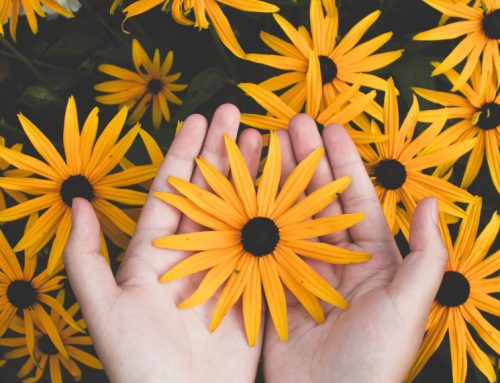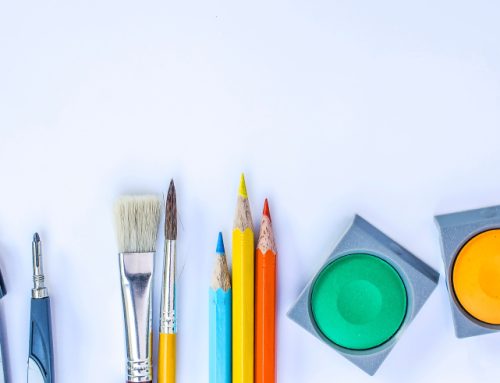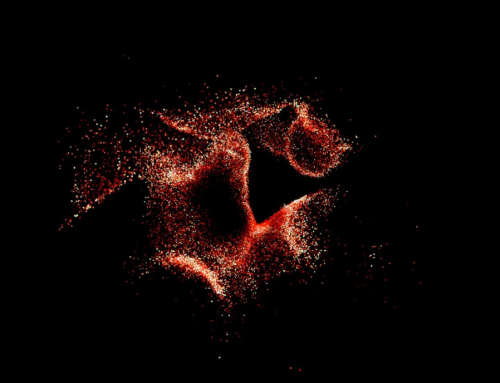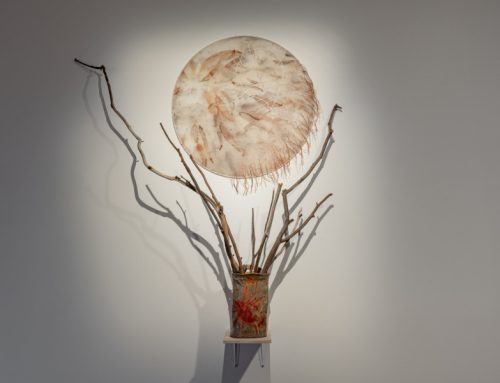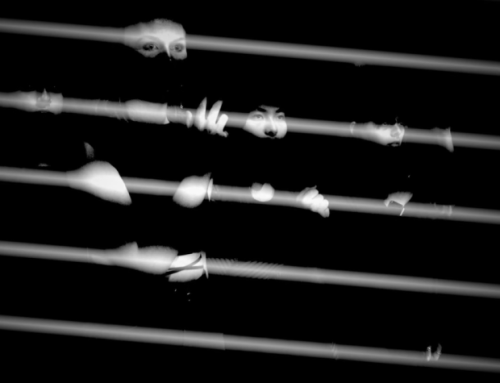Sydney’s Inner West Council recently commissioned five artist teams to create public artworks that celebrate and demonstrate their personal connections to the Gadigal Wangal Lands in various locations within local area.
The artworks interact with the public and serve to commemorate Aboriginal culture that has been tied to the land for generations. The project features artworks created by Tim Phibs in collaboration with PJ Simon, Kevin May and Joanne Cassady, Edward Clarke, Blak Douglas, Joe Hurst and Jasmine Sarin. Each of the individual artworks is situated in a different ward of the Inner West Council.
Alongside the ‘Gadigal Wangal Wayfinding Project’, the Inner West Council ran a mentoring program and commission for emerging Aboriginal artists. Hayley Pigram, Travis de Vries and Jasmine Sarin participated in the program under the guidance of Chris Edwards. Jasmine Sarin was awarded the commission for her artwork titled ‘Gurugal – Yagu – Barrabugu’ (see this article’s featured image) representing the connection between the entities – “past, present, future, the land, the sky and the water”. Her artwork now sits in the Camperdown Memorial Rest Park in Newtown.
Tim Phibs collaborated with P.J. Simon, Kevin May and Joanne Cassidy to create the Gadigal Mural which is located on Gadigal Reserve in Summer Hill.
“For the Gadigal Reserve mural, I wanted to create a vibrant mural which remembers the waterway originally known as Long Cove Creek. The waterway was an important home for endemic plants and animals, and these will feature prominently in the mural.
It is a very interesting urban space with plants and small creatures living there despite the fact that the creek line has been covered by urban development. The concrete canal has completely changed the way the creek looks. Although certain animals and plants that were once present have disappeared, the man-made structures of the bridge and railway overpass have become a new home for these animals. I planned from the outset to create the back drop for the mural with a bright, vibrant and stylised pattern work that symbolises the once pristine waterway and reminiscent of an aerial view of ripples and rain drops falling into the water.”
Working in tandem with the other three artists, the collaboration created a vibrant visual dialogue celebrating the local area’s proud Aboriginal heritage.
The artists encourage local residents and visitors to stop and consider the artwork, and in doing so create a deeper connection and a positive reminder of the Aboriginal cultural heritage and wildlife that continues to survive in the Inner West.

‘Gadigal Mural’, Tim Phibs, PJ Simon, Kevin May, Joanne Cassady. 2019. Image by Irony Mark Films, Supplied by Inner West Council
Heather Clarke and Chris Edwards created the piece ‘Fish Traps’, situated in King George Park in Rozelle.
“For Aboriginal Torres Strait Islander peoples, fishing is as natural and as necessary as breathing. It forms part of the deep cultural and spiritual connection many communities have with their waters and marine resources, whether saltwater or freshwater. Fishing is a cultural practice and is informed by traditional knowledge. Today, these long-held traditions have become increasingly challenged. Aboriginal and Torres Strait Islander communities have been marginalised from both commercial and non-commercial fisheries and are often denied access to their traditional waters. But across Australia, Aboriginal and Torres Strait Islander fishers are taking steps to ensure their voices and values are heard in fisheries management planning, negotiating catch allowances and controlled access to their waters and marine resources. While the importance of fishing as a way of life is obvious to many Aboriginal and Torres Strait Islander peoples, there have been few attempts to translate their experiences into a narrative that governments, non-Indigenous fishers and the general public can immediately understand and appreciate.”

‘Fish Traps’, Edward Clarke. 2019.
Image by Irony Mark Films, Supplied by Inner West Council
Blak Douglas, another of the five commissioned artists, dedicated his sculpture as a monument to the Gadigal people. This artwork can be found in Hawthorne Reserve in Leichhardt.
“The botanical name is Xanthorrhoea Australis but here the plant is known as Cadi. I wished to acknowledge the totem of the local peoples. In as elaborate way possible and hence this design would be arguably the first such acknowledgement here. Being a sensitive species, the loam needs to be uncorrupted, which is why we rarely see the actual plant growing happily within suburbia. It is my vision that this be the first of many ‘models’ that may appear in and around the CBD of Sydney. At least this piece may stand as the first quasi monument to the totem of the Gadigal (Cadigal) peoples. It is only apt that this impressive stature stands as homage to the men whom met the British on arrival, standing erect and with spears at side. No doubt an impressive site indeed. With accompanying plaque, this piece will serve as a crucial educational resource for all visitors to Hawthorne Reserve.”

‘Cadi the Clansman’, Blak Douglas. 2019. Image by Irony Mark Films, Supplied by Inner West Council
Nawi by Joe Hurst, the final of the five commissions, draws on Hurst’s personal experiences in Steel Park in Marrickville, where the artwork is based.
“My concept is to represent a nawi (or bark canoe). I have designed the nawi over-scaled to create a sense of space. The nawi was used on the waterways of the Sydney basin including what is now called the Cooks River and its tributaries. The Cooks River is a mangrove tidal estuary river of what is now called Botany Bay. The nawi were constructed from cobajora (Yellow Stringybark trees) that lined the waterways, and were used for fishing baludarri (leather-jacket) or garuma (bream) and other small fish, using a garradjun (fishing line) and bara (fishhook made from oyster shell), enough for cooking on a small guwiyung (fire). These canoes were an important form of transport used to cross the river and to float up and down with the tides. The mahn (fisherwomen) and mani (fishermen) skilfully navigated the mangroves and the rocky shelves to gamay (Botany Bay) at the mouth of the river.”

‘Nawi’, Joe Hurst. 2019. Image by Irony Mark Films, Supplied by Inner West Council
The project has had a lasting impact. It was awarded the 2021 Leo Kelly OAM Arts and Culture Award by Local Government NSW. It has also been highlighted in the ‘Learning from Country’ research project undertaken by Dr Katrina Thorpe, a Worimi researcher at the University of Technology Sydney who is developing opportunities for students to connect with Aboriginal people and Country in the Inner West. Dr Thorpe explained the significant impact these art works can make in education:
“I’ve lived on Gadigal Wangal land for the last 20 years, so I’m passionate about getting students out of the classroom to walk with Aboriginal Elders and community educators to learn from Country in Sydney. This is especially important in urban areas where most Australian’s live and where non-Aboriginal people often have trouble grasping the continuity of Aboriginal presence in our cities. During the first Covid lockdown, walking through local green spaces and along the waterways on Country kept me grounded. It was on one of these walks that I discovered Edward Clarke’s “Fish Traps” – I loved how it spoke to the surrounding Country.
After reading the signage, I was keen to contact the Inner West Council to learn more about the Gadigal Wangal Wayfinding Project. These art works and the work leading to their creation have further inspired my research on ‘Learning from Country’ in education because they visibilize Aboriginal history, culture and the longevity of Aboriginal connection in the Inner West of Sydney. Seeing these art works in public spaces can be healing as they provide a reminder of Aboriginal people’s knowledge of the land and waterways as well as represent the strength and resilience of Aboriginal people. They also provide a way to connect the wider community to Aboriginal culture and history in their local area and from this, new conversations can emerge.”

Inner West Council staff and commissioned artists. Image by Irony Mark Films, supplied by Inner West Council
The project was organised by Bronwyn Tuohy and Deborah Lennis and was funded by the NSW Government as part of the Stronger Communities Programme. More information about the project can be found on the Inner West Council website.
You can also find out more about the project by watching this video from Inner West Council.

